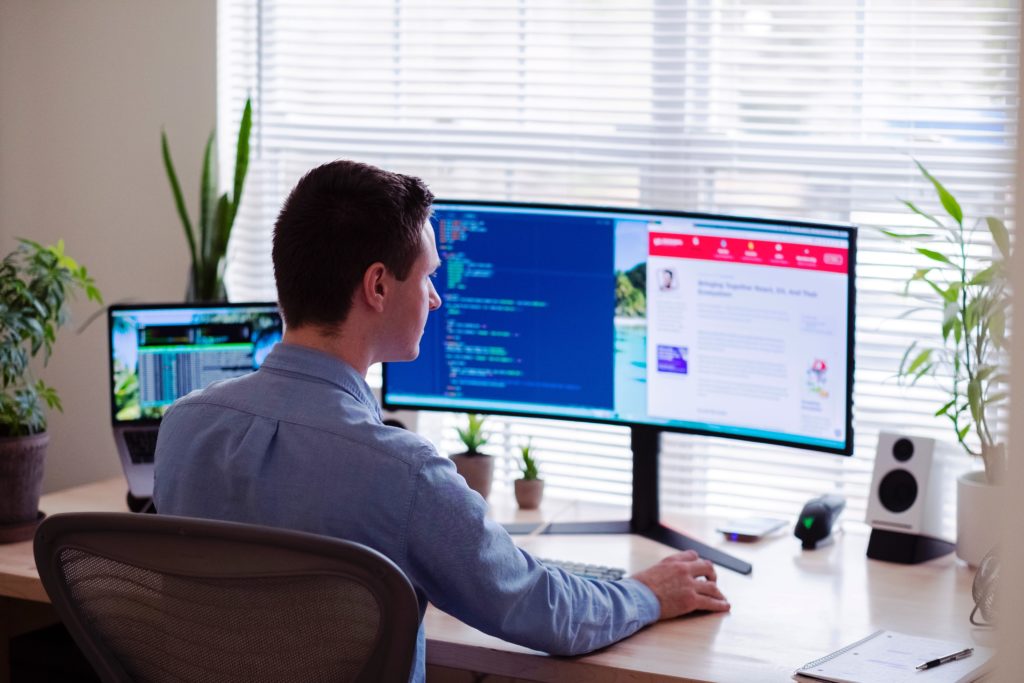
Image source: Unsplash, Luke Peters
As Highwire, and other businesses across the U.S., transition to a remote workforce, it’s never been more important for us to consider our personal cybersecurity. Understanding the steps needed to take your security into your own hands is critical to protecting your data, and your company’s data against cyberattacks. We’ve compiled a list of our top five best practices for your easy reference below.
1. Beware of Phishing Attacks
Phishing attacks, specifically on work emails, have dramatically increased as more people work from home because of COVID-19. Phishing attacks often take the form of emails coming from someone posing as a trusted person, like a coworker, attempting to obtain sensitive information like usernames, passwords and financial details. All employees should be hyper-aware of any email that asks you for personal information. Some ways to spot phishing emails include looking at the email of the sender. If it doesn’t have a recognizable email address, it’s probable a scam. If the email uses a generic greeting or has spelling errors, it is probably not from a verified sender. If you’re ever unsure about an email you receive, it’s always better to pick up the phone and call that person directly to confirm before giving away any sensitive information. Another best practice is to never click on anything in an email without checking the sender and instead type the web addresses into your browser yourself.
2. Use Two-Factor Authentication
Now that businesses have gone completely digital, all employees should have 2-factor authentication (2FA) for any company logins to ensure that only the right people are accessing certain sensitive data. 2FA only grants a user access once they have successfully presented two (or more) pieces of evidence that they are the person they claim to be. This could mean logging into your account on your computer with your password first, then entering a code you received on your cell phone to confirm it’s you. That second form of identification should always be something that you have on your person, whether a code sent to a cell phone, a security key, or a one time generated code from an app. You should enable 2FA on all of the devices and applications you use for work.
3. Separate Work from Play
As our two worlds, home and work, become one. It is important to keep your work and play on separate computers. When people are at home, it’s easy to mix the two, as you click on links or do things at home you may not typically do in the office. This can lead to major security issues. For example, if your device is stolen and you have your work accounts linked, it may be easier for malicious actors to gain access to sensitive information.
4. Update, update, update
One of the best ways to ensure your devices are secure is to stay up to date on all settings. Users should make sure that all privacy settings are updated across their devices. Updating to the most recent softwares is also important. For example, most online tools like Zoom have been updating their settings during the pandemic to ensure user safety. In addition, we should all remember to update our passwords every 90 days. If you’re currently using a password that your cybersecurity team would laugh at, you may consider a password manager like Dashlane. A password manager stores all login information and helps you create and store complex passwords. Updating your passwords and making sure they are complex will make you less vulnerable to sophisticated cyber criminals.
5. Use a Virtual Private Network
Hopefully, your new home office has password-protected Wi-Fi and uses at least WPA2 security protocol. But in this new remote workforce, where home Wi-Fi passwords may not be as strong in favor of making them easy to remember, employees may consider using virtual private networks (VPNs) to keep themselves, and the company IP, safe and secure. For those who may not know, a VPN extends a private network across a public network, helping to secure your devices.
Overall, we know there’s a lot going on for you right now and security may not be at the top of priorities, but we hope these simple tips will show you how easy it is to stay protected during this pandemic and that instilling these best practices across all your devices will help keep you, your family, and your company safe.
Have any best practices you follow and would like to share? Reach out to jillian@highwirepr.com to share your best tips and tricks. We’d love to hear from you!